| DESCRIPTION | HISTORY |
Microscope-Floroscopemade in France, these early 20th Century simple microscopes were mostly made in Germany
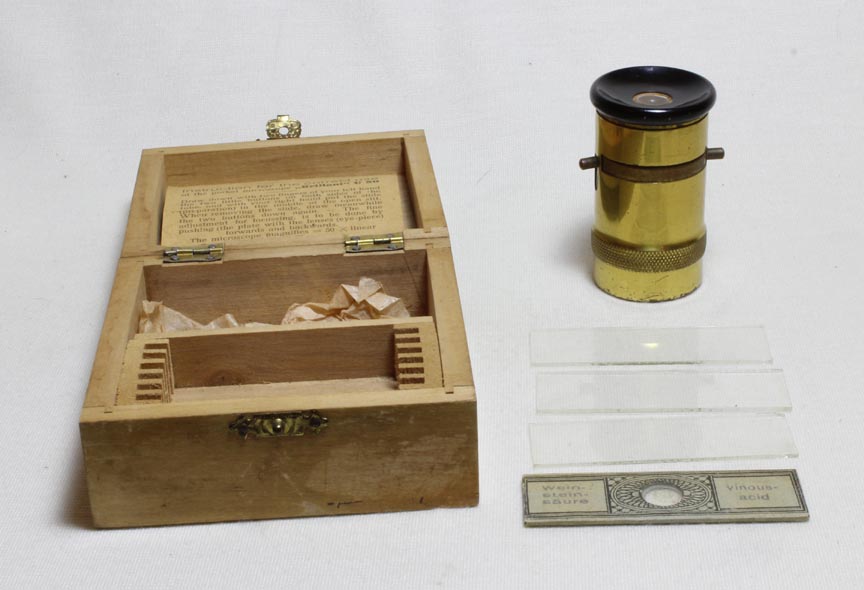
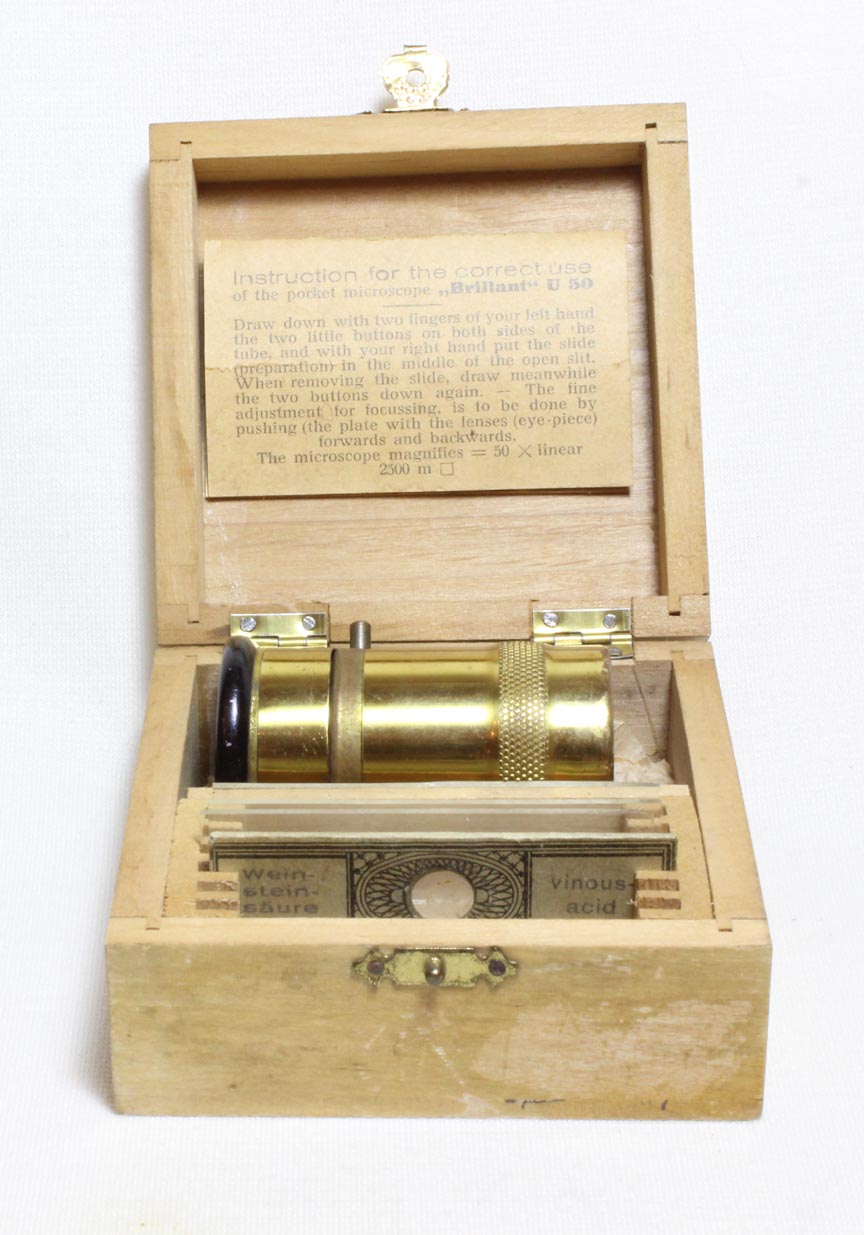
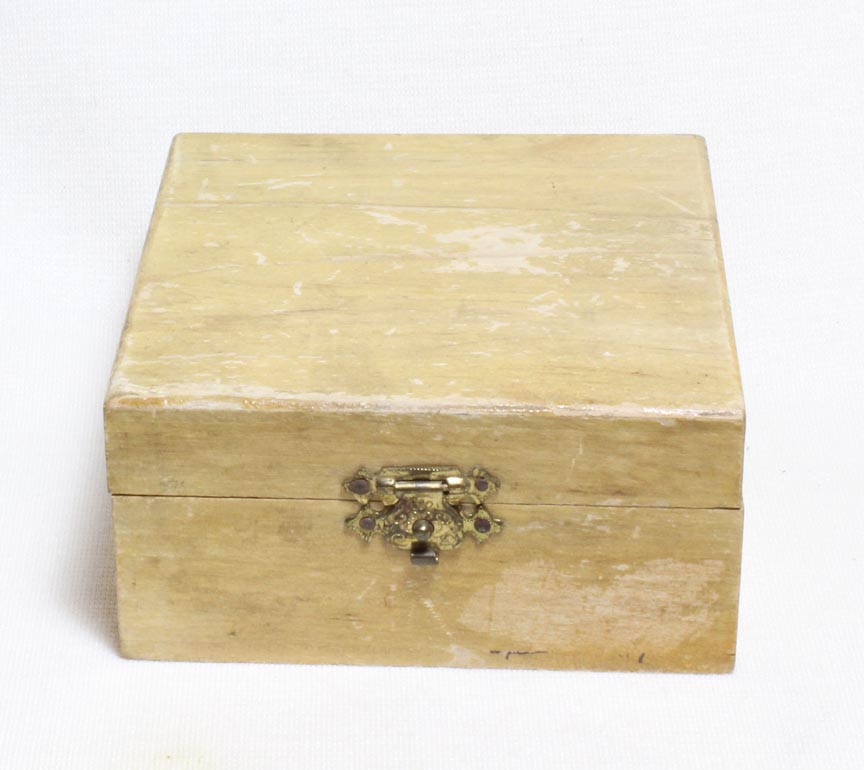
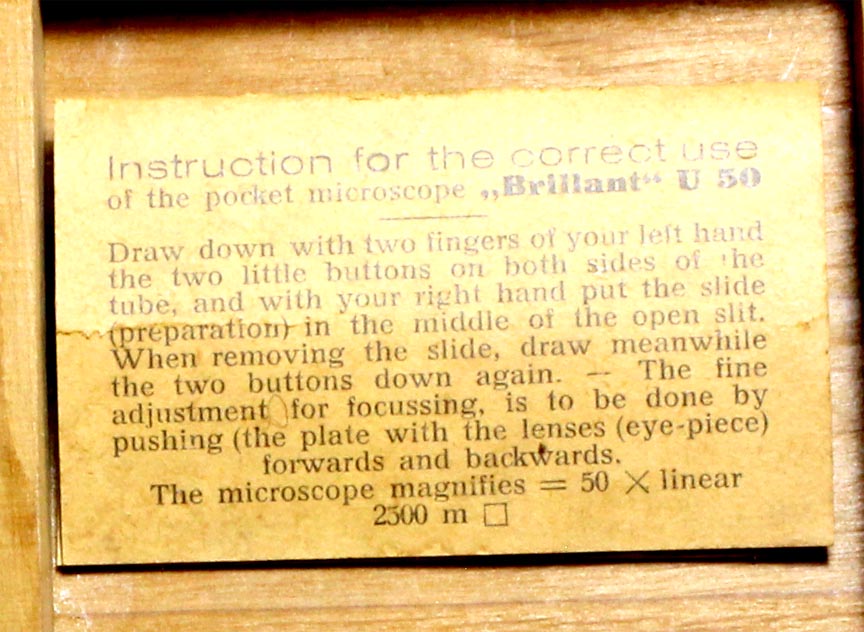 Above
is the 'Brillant U50,' this example from the second quarter of the
twentieth century. It came in a small wooden case (measuring 81 X 81 X
40 mm externally), with instructions in English on the lid (shown to
the left) and a few slides. The optical element is housed in a
Bakelite-like material. It is signed 'Germany' on the bottom diaphragm.
The microscope measures 29 mm in external diameter and is about 53 mm
long with the slot measuring 30 mm wide. It came with three plane
slides measuring 61.5 X 19 X 1 mm, and one prepared slide labeled
'Veinus Acid.' Note that this microscope and the 'Mikro' shown below,
both can accept not only the small slides provided but also the
standard size 1 inch (25 mm) wide.
Above
is the 'Brillant U50,' this example from the second quarter of the
twentieth century. It came in a small wooden case (measuring 81 X 81 X
40 mm externally), with instructions in English on the lid (shown to
the left) and a few slides. The optical element is housed in a
Bakelite-like material. It is signed 'Germany' on the bottom diaphragm.
The microscope measures 29 mm in external diameter and is about 53 mm
long with the slot measuring 30 mm wide. It came with three plane
slides measuring 61.5 X 19 X 1 mm, and one prepared slide labeled
'Veinus Acid.' Note that this microscope and the 'Mikro' shown below,
both can accept not only the small slides provided but also the
standard size 1 inch (25 mm) wide.
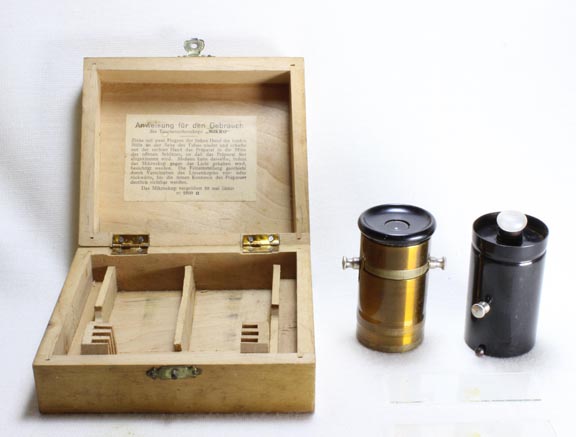
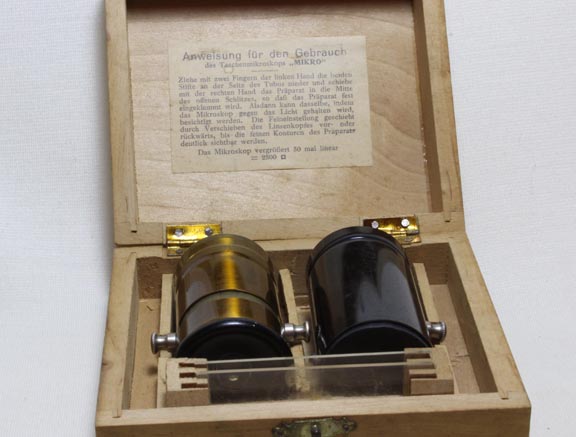
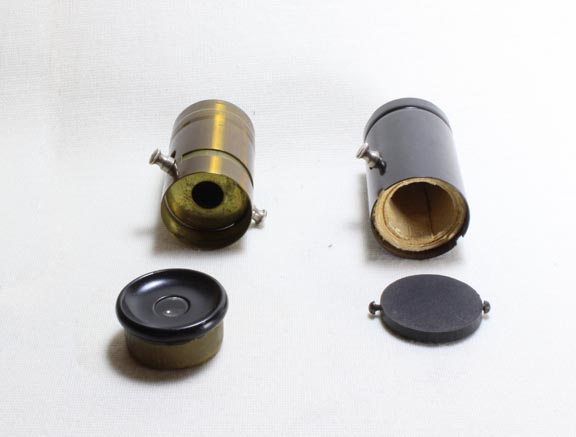

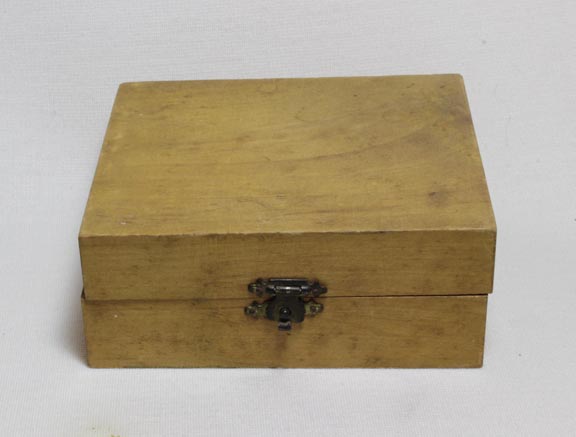 This
microscope, also likely from the second quarter of the 20th Century,
called the 'Mikro,' with instructions written in German(translation
provided in blue by me) is similar to the Brillant U50, but has an
attachment with a small incandescent light source. It is unsigned and
does not bear its country of origin on the instrument itself. The
optical cylinder has an outside diameter of 29 mm and is 55 mm long.
The lighting attachment measures 30 mm in outside diameter and is about
53 mm long excluding the bulb. It was designed to accept a battery that
is no longer produced measuring about 20 mm in diameter and 40 mm long.
The user had the option of using natural lighting or the electric
source. This would have used a battery from the time when the outer
side covering of the battery, made of thin paper, was easily removed.
Contact was then made with the side of the battery, by pushing in the
chromed button on the side to complete the circuit. Again a
Bakelite-like material houses the optics. The battery compartment is
closed with a disk-shaped wooden fitting, which is painted a flat black
color, with two screws projecting out horizontally. This disk is
secured by engaging the two pins which fit snugly into small cutouts in
the bottom of the light source cylinder. The fitted main case is made
of a light colored wood. Two slides are included, one plane, and one
depression slide. A single small cover slip is also in the kit. The
slides measure 58 X 17 X 1 mm. The exterior dimensions of the box are
105 X 94 X 42 mm. The slot is wide enough to accept not only the small
slides provided, but also standard 1 inch (24 mm) wide slides.
This
microscope, also likely from the second quarter of the 20th Century,
called the 'Mikro,' with instructions written in German(translation
provided in blue by me) is similar to the Brillant U50, but has an
attachment with a small incandescent light source. It is unsigned and
does not bear its country of origin on the instrument itself. The
optical cylinder has an outside diameter of 29 mm and is 55 mm long.
The lighting attachment measures 30 mm in outside diameter and is about
53 mm long excluding the bulb. It was designed to accept a battery that
is no longer produced measuring about 20 mm in diameter and 40 mm long.
The user had the option of using natural lighting or the electric
source. This would have used a battery from the time when the outer
side covering of the battery, made of thin paper, was easily removed.
Contact was then made with the side of the battery, by pushing in the
chromed button on the side to complete the circuit. Again a
Bakelite-like material houses the optics. The battery compartment is
closed with a disk-shaped wooden fitting, which is painted a flat black
color, with two screws projecting out horizontally. This disk is
secured by engaging the two pins which fit snugly into small cutouts in
the bottom of the light source cylinder. The fitted main case is made
of a light colored wood. Two slides are included, one plane, and one
depression slide. A single small cover slip is also in the kit. The
slides measure 58 X 17 X 1 mm. The exterior dimensions of the box are
105 X 94 X 42 mm. The slot is wide enough to accept not only the small
slides provided, but also standard 1 inch (24 mm) wide slides.
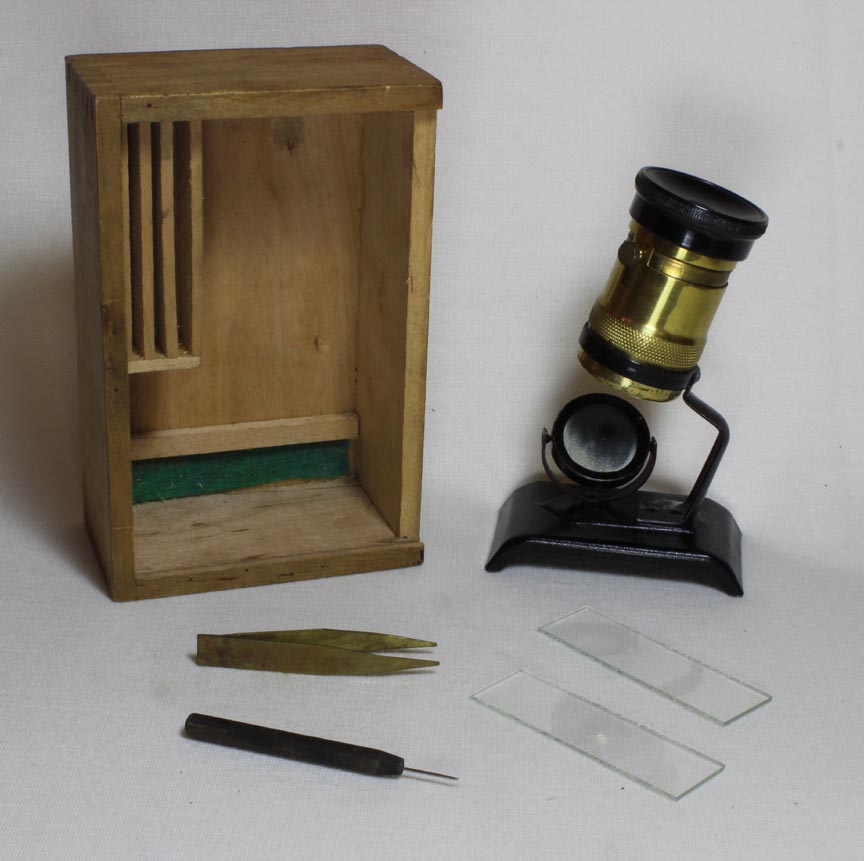
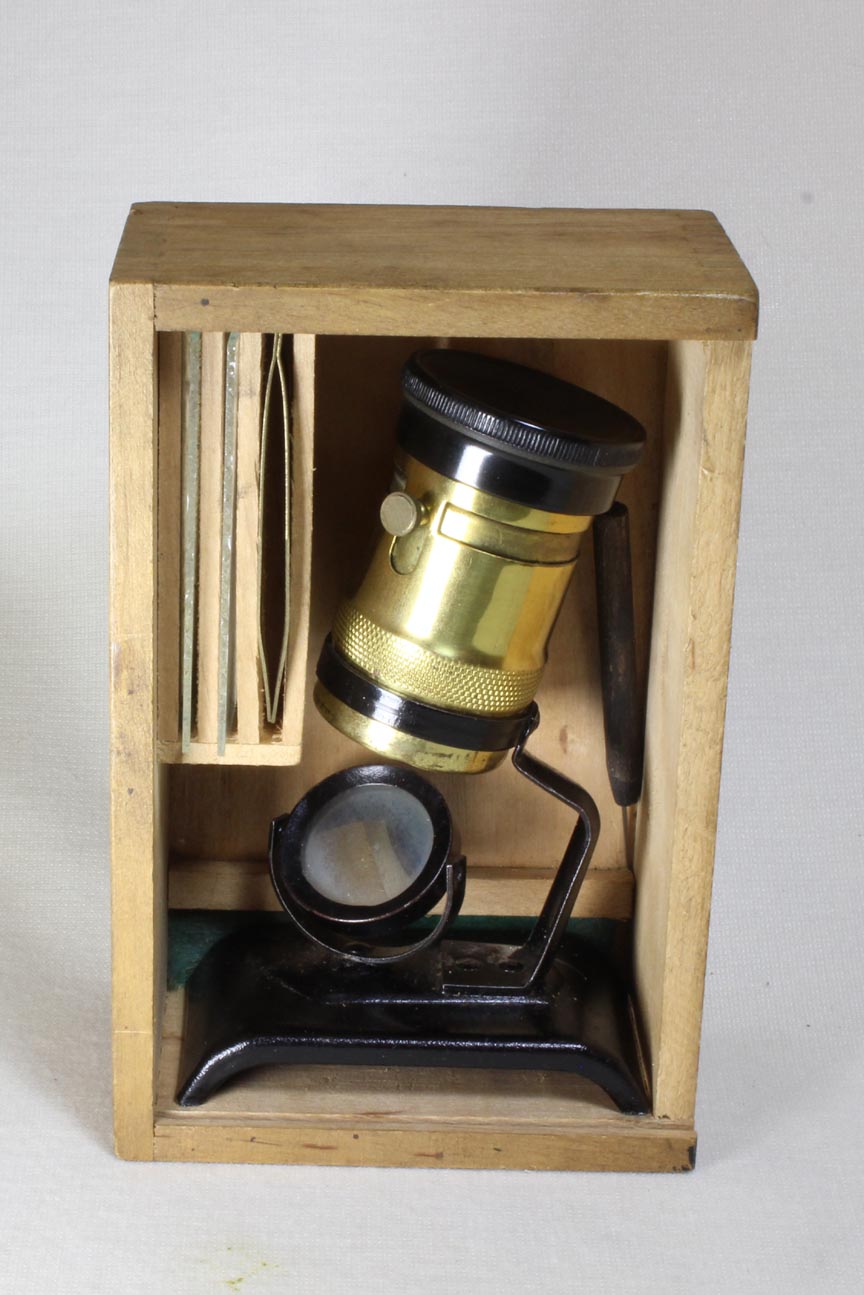
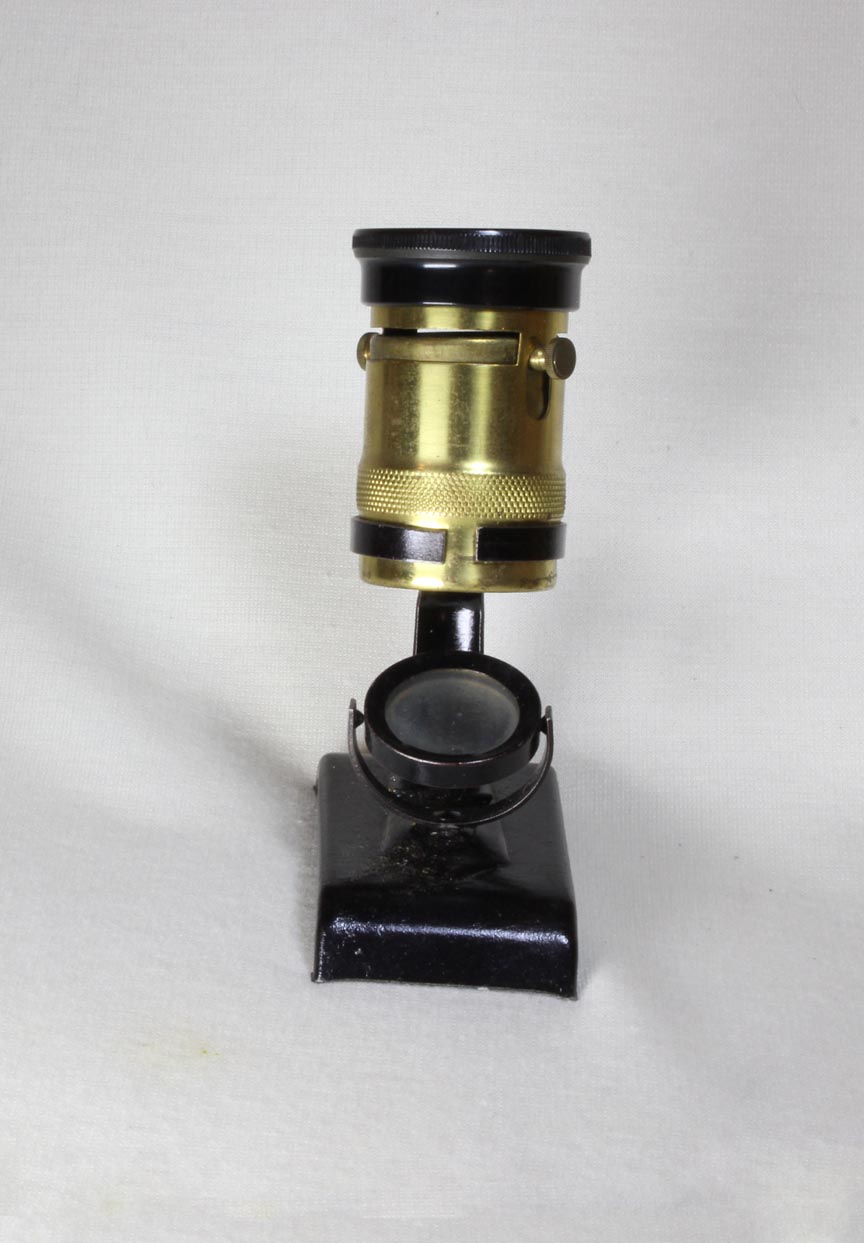



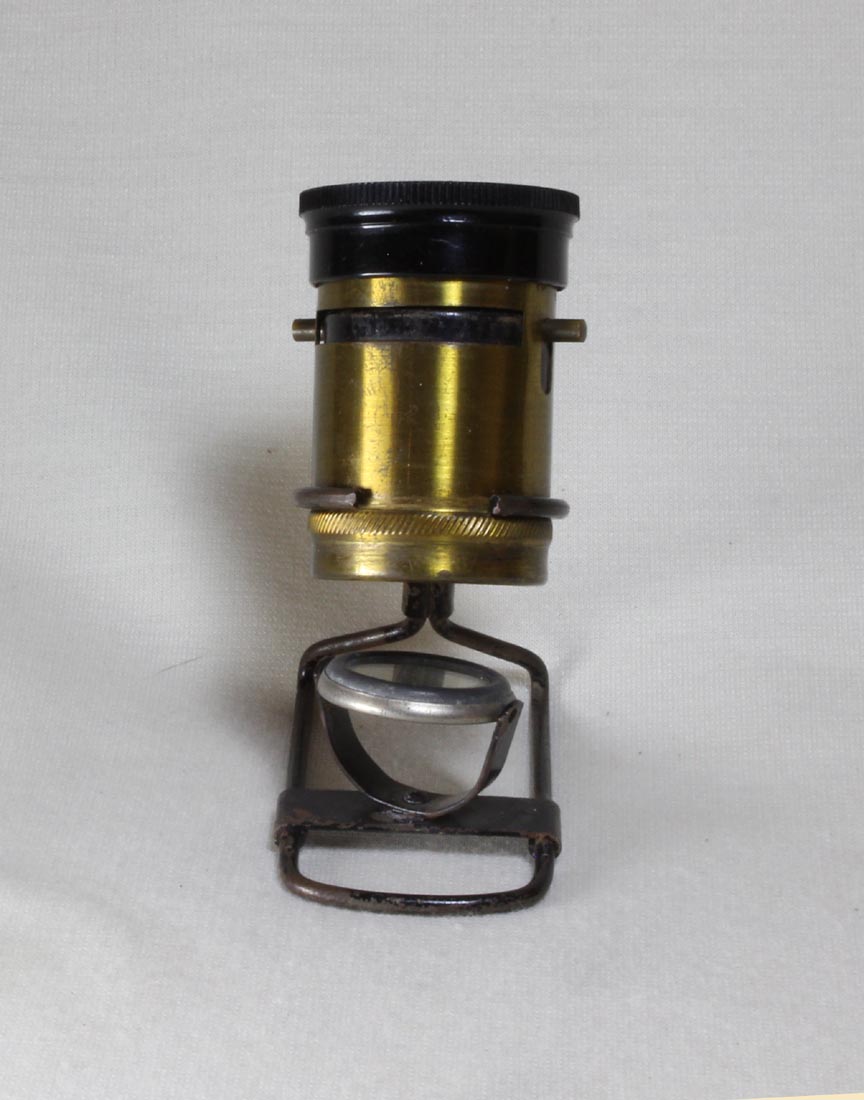
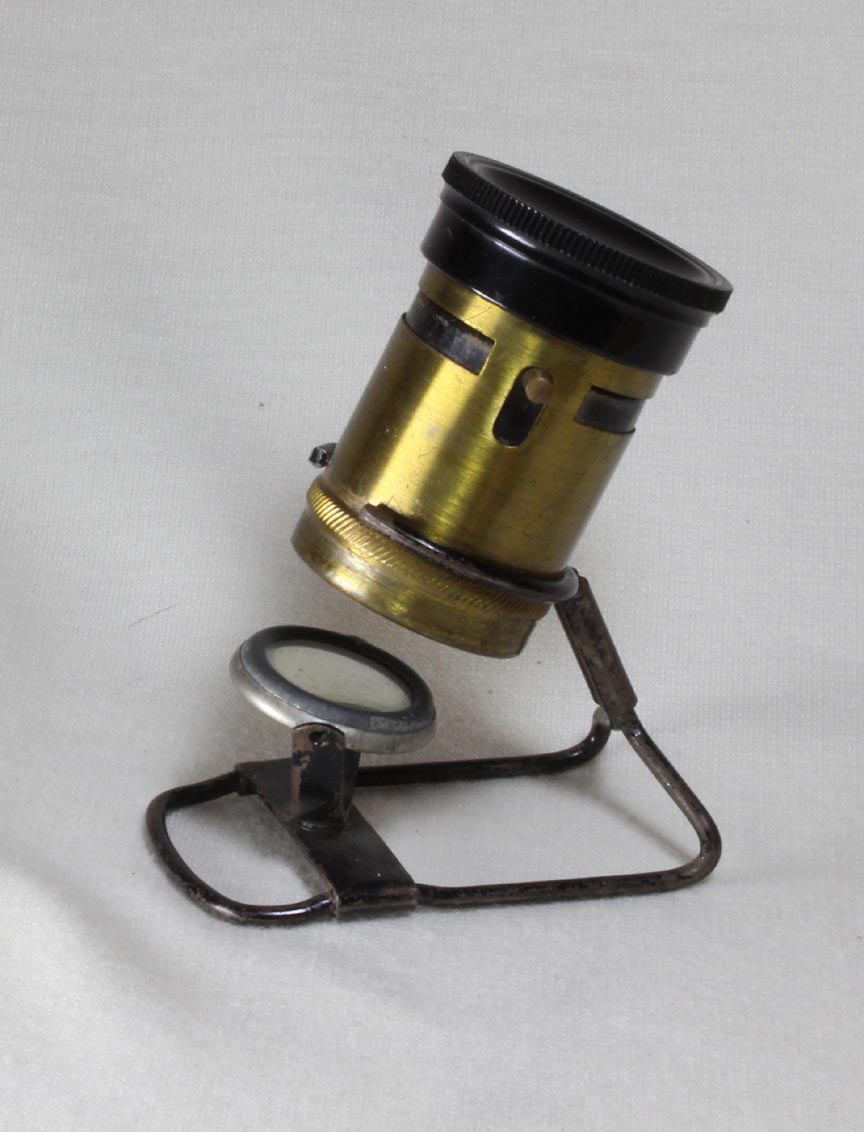
Universal-Standmikroskop. It has a magnification of 50x. The inscription
MADE IN GERMANYappears on the base of other examples of this microscope,
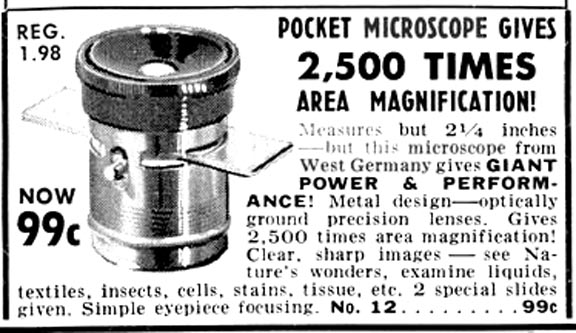 As
mentioned above, these instruments were sold in the second and third
quarter of the twentieth century. Shown here is an ad from 1956.
As
mentioned above, these instruments were sold in the second and third
quarter of the twentieth century. Shown here is an ad from 1956.